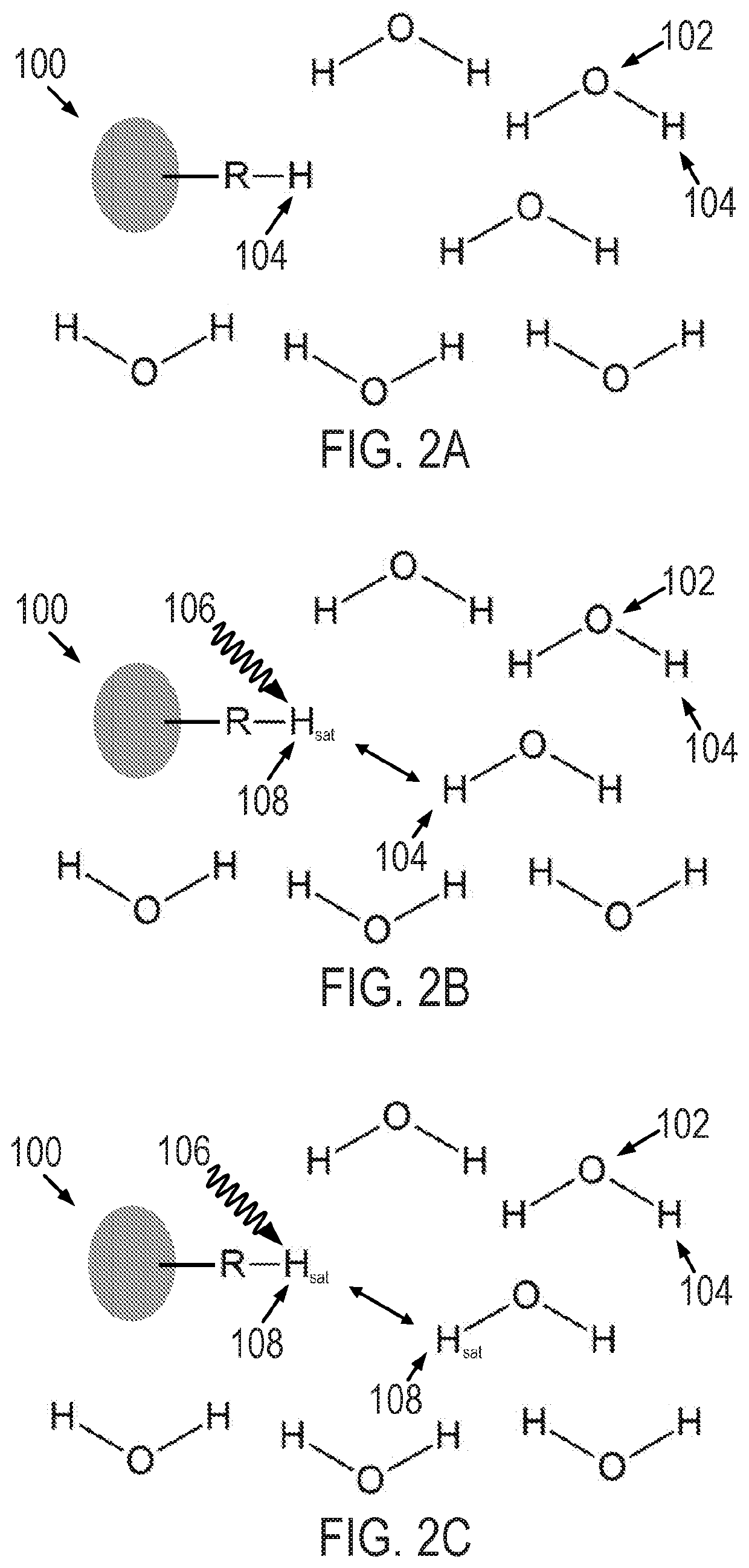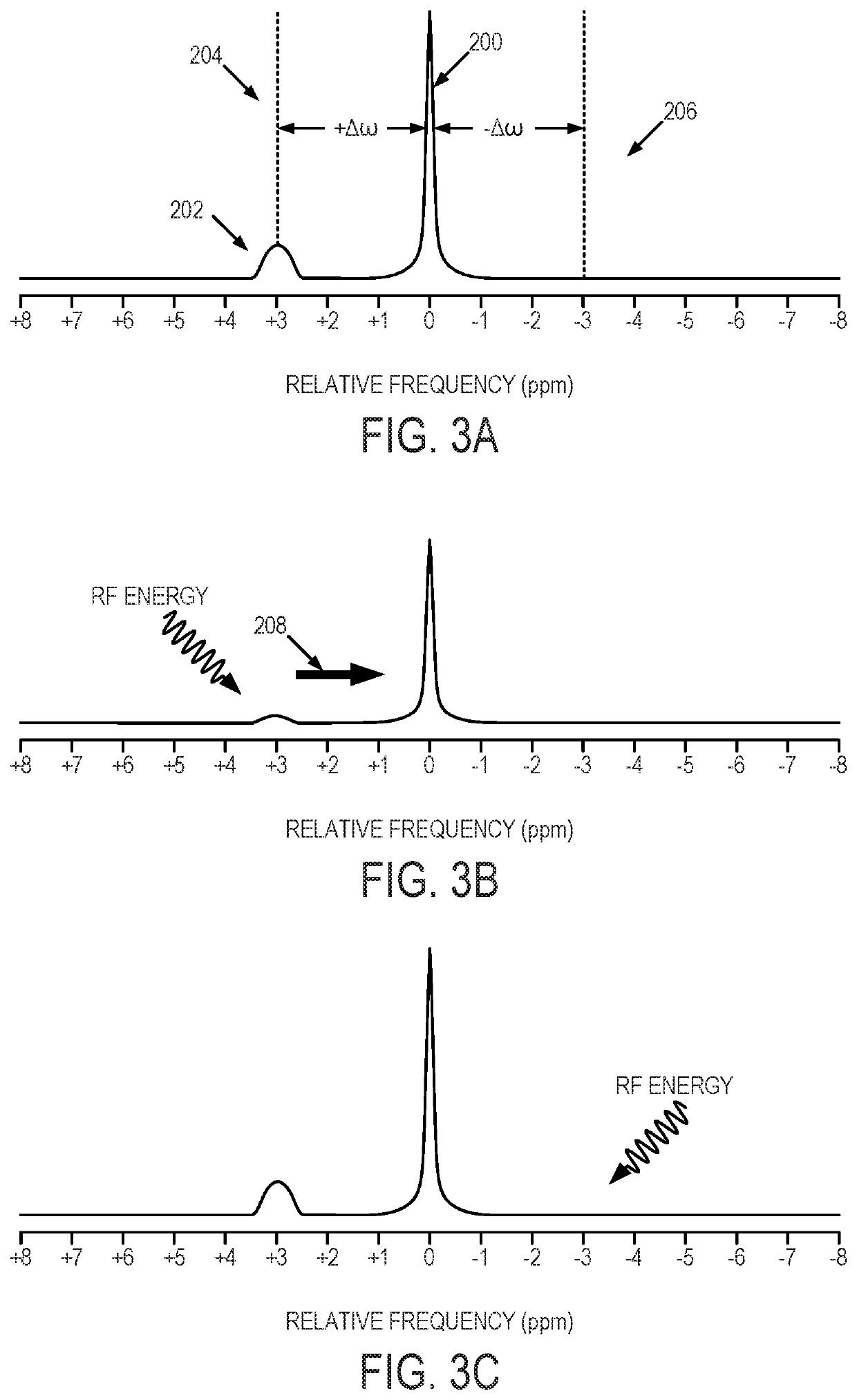Simultaneous ph and oxygen weighted MRI contrast using multi-echo chemical exchange saturation transfer imaging (me-cest)
- Summary
- Abstract
- Description
- Claims
- Application Information
AI Technical Summary
Benefits of technology
Problems solved by technology
Method used
Image
Examples
example 1
-EPI Pulse Sequence
[0103]Simultaneous acquisition of pH-sensitive information and relaxometry measures of R′2 were performed using a SAGE-EPI readout. The SAGE-EPI readout consisted of 2 gradient echoes (TE1=14.0 ms; TE2=34.1 ms), an asymmetric spin echo (TE3=58.0 ms), and a spin echo (TE4=92.4 ms). All phantom and human CEST-SAGE-EPI data were acquired with a CEST saturation pulse train consisting of 3 (3×) 100-ms Gaussian pulses with amplitude B1=6 μT, TR>10,000 ms, FOV=240×217, matrix size=128×104, partial Fourier encoding=6 / 8, GRAPPA=3, bandwidth=1630 Hz / pixel, and 25 contiguous slices with a 4-mm slice thickness. A total of 29 z-spectral points were acquired with data around ±3.0 ppm and 0.0 ppm with respect to water (from −3.5 to −2.5 in intervals of 0.1; from −0.3 to +0.3 in intervals of 0.1; and from +2.5 to +3.5 in intervals of 0.1). An additional reference S0 scan with identical parameters and no saturation pulse was acquired with number of excitations or averages=4. The t...
example 2
esting
[0104]To demonstrate the ability to simultaneously acquire pH-sensitive information along with relaxometry measures of R2, R*2, and R′2, we performed CEST-SAGE-EPI, multi-echo gradient-echo (ME-GRE), and multi-echo spin-echo (Carr-Purcell-Meiboom-Gill [CPMG]) MR acquisition in a series of 36 glutamine phantoms (100 mM) with combinations of varying pH (5.0, 5.5, 6.0, 6.5, 7.0, 7.5) and gadopentetic acid (Gd-DTPA; Magnevist, Bayer HealthCare Pharmaceuticals, Berlin, Germany) concentration (0, 0.25, 0.5, 1.0, 1.5, and 2.0 mM) in 50-mL falcon tubes. The 100-mM glutamine solution was prepared first using distilled water. The pH in each phantom was titrated using dilute acid (0.1N HCl) and base (0.1N NaOH) solution. The desired Gd-DTPA was then added to the phantom solution and vortexed. All samples were vortexed and pH was re-evaluated prior to MRI acquisition.
[0105]The ME-GRE sequence used for R*2 quantitation was collected with TE=20 / 40 / 60 / 80 ms, TR=10,000 ms, flip angle=90 degre...
example 3
esting
[0106]A total of 47 histologically proven glioma patients (World Health Organization [WHO] IV, n=20; WHO III, n=14; WHO II, n=13) were enrolled in the current study prior to initial surgical resection or at first recurrence. All patients provided informed, written consent to have advanced imaging, and this information included in our internal review board-approved research database. In addition to CEST-SAGE-EPI prior to contrast administration, all patients received the anatomic images according to the standardized brain tumor imaging protocol, including T2-weighted fluid-attenuated inversion recovery (FLAIR) images, T2-weighted turbo spin-echo images, and diffusion-weighted images with 3-mm slice thickness and no interslice gap, along with parameter-matched, 1-mm isotropic 3D T1-weighted MPRAGE scans before and following injection of 0.01 mg / kg Gd-DTPA.
[0107]Clinical postprocessing of CEST-SAGE-EPI included affine motion correction (mcflirt; FSL, FMRIB, Oxford, United Kingdom...
PUM
 Login to View More
Login to View More Abstract
Description
Claims
Application Information
 Login to View More
Login to View More - R&D
- Intellectual Property
- Life Sciences
- Materials
- Tech Scout
- Unparalleled Data Quality
- Higher Quality Content
- 60% Fewer Hallucinations
Browse by: Latest US Patents, China's latest patents, Technical Efficacy Thesaurus, Application Domain, Technology Topic, Popular Technical Reports.
© 2025 PatSnap. All rights reserved.Legal|Privacy policy|Modern Slavery Act Transparency Statement|Sitemap|About US| Contact US: help@patsnap.com



